See Diocletiana Predecessor Ernesto Gallina Appointed 4 January 1976 Name Annibale Bugnini Consecration February 13, 1972 | Term ended 3 July 1982 Ordination July 26, 1936 Nationality Italian | |
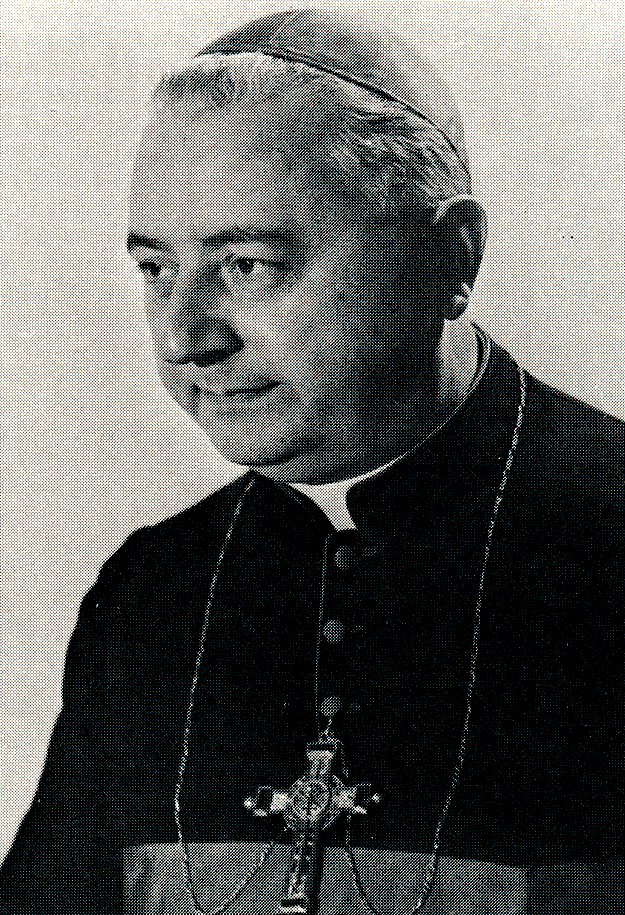 | ||
Other posts Titular Archbishop of Diocletiana Books The Reform of the Liturgy, 1948-1975 | ||
Annibale bugnini tw rca nowej mszy
Annibale Bugnini, C.M. (14 June 1912 – 3 July 1982) was a Roman Catholic prelate. Ordained in 1936 and named archbishop in 1972, he was secretary of the commission that worked on the reform of the Catholic liturgy that followed the Second Vatican Council. Critics of the changes made to the Catholic Mass and other liturgical practices before and after Vatican II consider him a controversial figure. He held several other posts in the Roman Curia and ended his career as papal nuncio to Iran, where he acted as an intermediary during the Iran hostage crisis of 1979 – 1981.
Contents
- Annibale bugnini tw rca nowej mszy
- Early life and ordination
- Curial career
- Diplomatic service
- Death
- Allegations of Freemasonry
- References
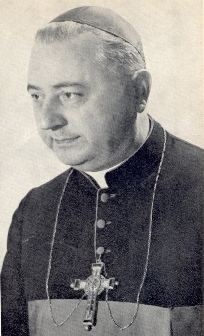
Early life and ordination
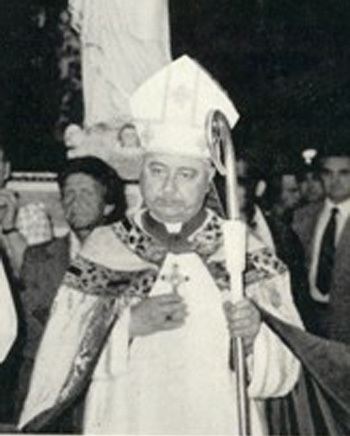
Annibale Bugnini was born in Civitella del Lago in Umbria. In 1928 he began his theological studies with the Congregation of the Mission and was ordained a priest on 26 July 1936.
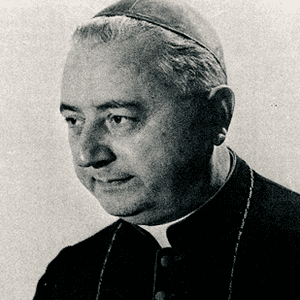
He completed his doctorate in sacred theology at the Pontifical University of St. Thomas Aquinas Angelicum in 1938 with a dissertation entitled De liturgia eiusque momento in Concilio Tridentino
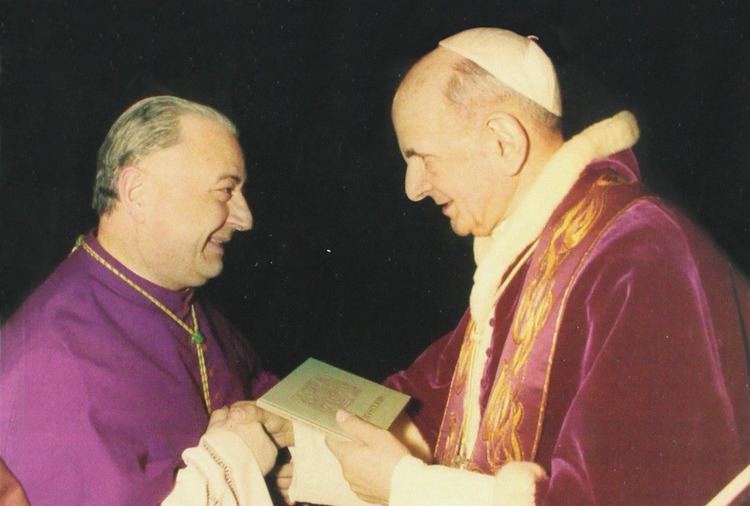
He spent ten years in parish work in a suburb of Rome. In 1947 Bugnini became involved in the production of the missionary publications of his order and became the first editor of Ephemerides Liturgicæ, a scholarly journal dedicated to the reform of the Catholic liturgy. Starting in 1949, he taught Liturgical Studies at the Pontifical Urban College (now the Pontifical Urban University). He later became a professor at the Pontifical Lateran University.
Curial career
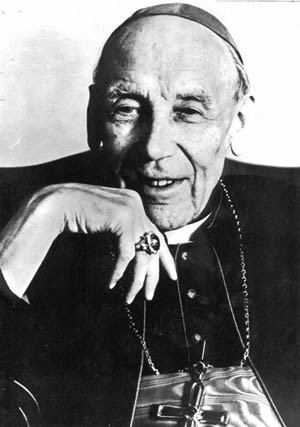
On 28 May 1948, Pope Pius XII appointed Bugnini Secretary to the Commission for Liturgical Reform, which created a revised rite for the Easter Vigil in 1951 and revised ceremonies for the rest of Holy Week in 1955. The Commission also made changes in 1955 to the rubrics of the Mass and Office, suppressing many of the Church's octaves and a number of vigils, and abolishing the First Vespers of most feasts. In 1960 the Commission modified the Code of Rubrics, which led to new editions of the Roman Breviary in 1961 and the Roman Missal in 1962.
On 25 January 1959, Pope John XXIII announced his plan to convene the Second Vatican Council. On 6 June 1960 Fr. Bugnini was named Secretary of the Pontifical Preparatory Commission on the Liturgy. This body produced the first drafts of the document that, after many changes, would become the Council's Constitution on the Sacred Liturgy (1963). When the Council convened in October 1962, the Preparatory Commission was succeeded by the Conciliar Commission on the Sacred Liturgy, on which Bugnini was assigned the role of a peritus (expert). At the same time, Bugnini was removed from the chair of Liturgy at the Pontifical Lateran University because, in the words of Piero Marini, "his liturgical ideas were seen as too progressive."
The Council and Pope Paul VI approved the Constitution on the Liturgy on 4 December 1963. On 30 January 1964, the Pope appointed Bugnini Secretary of the Council for the Implementation of the Constitution on the Liturgy. Bugnini was appointed the Secretary of the Congregation for Divine Worship by Pope Paul in May 1969. In January 1965, he became an undersecretary in the Congregation of Rites responsible for causes for beatification and canonization.
On 6 January 1972 Pope Paul named Bugnini Titular Archbishop of Diocletiana and he was consecrated him as bishop on the following 13 February.
On 16 July 1975 Pope Paul announced the merger of two curial departments to form the Congregation for Divine Worship and the Discipline of the Sacraments, ending Bugnini's career in the Roman Curia. His personal secretary was Piero Marini, who is now an Archbishop and President of the Pontifical Committee for International Eucharistic Congresses.
Diplomatic service
On 4 January 1976 the Vatican announced Bugnini's assignment as pro-nuncio to Iran. Bugnini studied the country, its history, and traditions. The results of his researches appeared in 1981 as La Chiesa in Iran (The Church in Iran).
In 1979 Bugnini tried unsuccessfully to obtain, in the name of the pope, the release of the American hostages being held at the United States embassy by followers of the Ayatollah Ruhollah Khomeini. He met with Khomeini to deliver Pope John Paul II's appeal for the release of the hostages. The 52 Americans were released on 21 January 1981, after 444 days in captivity.
Death
Bugnini died of natural causes at the Pope Pius XI Clinic in Rome on 3 July 1982.
His detailed account of the work to which he devoted most of his career, The Reform of the Liturgy 1948-1975, appeared posthumously. An English translation appeared in 1990.
Allegations of Freemasonry
Bugnini was suspected by some of being a Freemason, which is in conflict with Canon Law and Catholic tradition. Catholics who are Freemasons "are in a state of grave sin and may not receive Holy Communion." The public allegations of Bugnini's suspected Freemasonry began in the 1980s by Catholic writers Piers Compton and Michael Davies, as well as Australian Catholic theologian Fr. Brian Harrison. Pope Paul VI was concerned with a possible infiltration by various opponents of the Church and commissioned a full investigation into the matter, appointing a Canadian Cardinal Gagnon (then archbishop) to conduct it. The Vatican newspaper L'Osservatore Romano reported the theft from a safe in one of the Curial offices.
In Liturgical Time Bombs in Vatican II, English Catholic writer Michael Davies asserts that Bugnini's Masonic connections were behind his Modernist liturgical reforms, and that the discovery of his Masonic affiliation prompted his sudden transfer by Pope Paul VI from his post in the Roman Curia to that of Papal Nuncio to Iran. Davies further asserted that an unnamed Cardinal told him in the summer of 1975 that a "dossier" proving him to be a Freemason had been brought to the Pope's desk.
